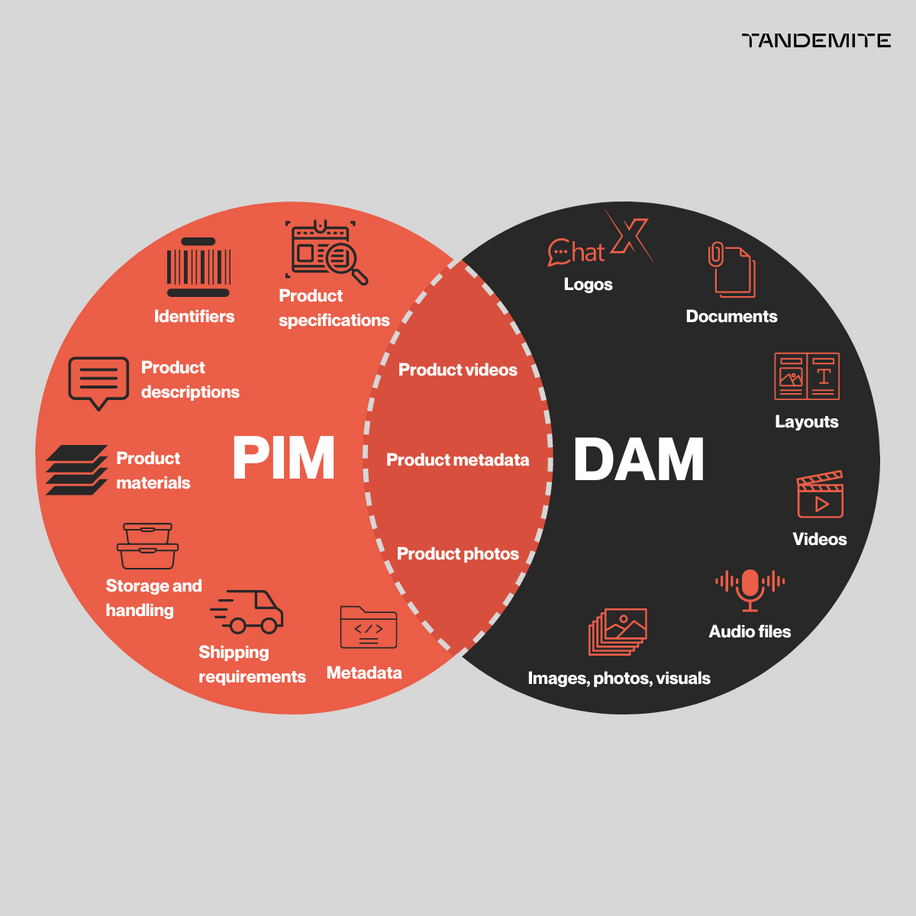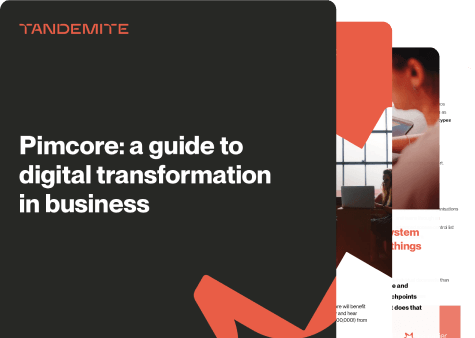PIM vs DAM comparison: What each system does and which one to choose?

As your catalog gets bigger, it’s easy for things to go wrong – inconsistent descriptions and product errors start to slip through unnoticed. Suddenly, you’re managing a sea of spreadsheets, searching for missing pictures, or accidentally sharing old information on your website. This happens to many growing businesses.
If data organization is taking up too much time, PIM and DAM tools could be the solution. You might have come across these terms before, but let’s explain what they do.
This quick 3-minute read will help you understand the differences between PIM and DAM, so you can make an informed decision and choose the best option.
What is PIM?
PIM stands for Product Information Management.
PIM systems are all about managing your product data in one place. Think of it as the backbone for handling product photos, descriptions, specifications, identifiers, and other attributes.
If you’re running an e-commerce store or managing a large catalog, PIM can help you centralize and distribute this information across different channels.
This way, no matter where your products are listed (website, print catalog, or marketplace), the information is always correct and up-to-date. A PIM system cuts down on manual tasks and helps maintain accuracy. No more copy-pasting data 10 times into different platforms. Nice, right?
PIM solutions like Pimcore and Akeneo are leaders in this space, offering advanced features that cater to enterprises of all sizes.
Stats that matter:
- Three out of four companies say they manage product data more efficiently after adopting a PIM system.
- Furthermore, 46% of businesses see data governance and compliance as the top motivations for adopting PIM (source: Worldmetrics.org).
What is DAM?
DAM systems, on the other hand, are for your digital content – things like product photos, promotional videos, logos, layouts, text-based files, audio files, 3D models, animations, and spreadsheets. It stands for Digital Asset Management.
Why is this required? A lot of assets go unused because people don’t know they exist or where to find them. As a result, marketers often waste time and money creating new ones unnecessarily.
Have you ever spent 20 minutes looking for the latest version of your logo or a visual, only to end up using the wrong one? DAM stops that madness. It stores all your digital files in one organized place and makes sure you can always find what you need and share with your customers, partners, and suppliers.
A DAM system ensures that your digital assets are easily accessible and version-controlled, preventing costly mistakes like using outdated logos or product images.
Do you need PIM or DAM?
The answer depends on what kind of challenges you’re facing. From the previous part, you can probably tell that the main difference is in what needs to be organized.
In a nutshell, if your main problem is managing product details (like descriptions and technical specs), you need a PIM. If you’re struggling to organize, find, or update digital assets (like photos and marketing assets), you need a DAM.
You should also know!
Both PIM and DAM systems can handle product images, videos, and metadata, making them essential for managing your product-related content. In a PIM system, images and basic metadata, like descriptions or tags, are linked to products for easy distribution across platforms. However, more complex digital files (such as high-resolution images, marketing videos, or version-controlled media assets) are better managed in a DAM system. Essentially, PIM organizes product details, while DAM takes care of the heavy-duty media, ensuring everything stays consistent and easy to find.

What if you need both?
Many companies are juggling both product data and digital assets. The good news is, there are platforms like Pimcore that integrate both solutions into one system.
This means you don’t have to switch between different tools to manage product info and audio files – it’s all in one place, saving you time and reducing chaos. Whether you're updating product details across websites or keeping track of marketing materials, Pimcore has you covered.
The bottom line
Choosing between PIM and DAM depends on your business needs.
Consider a PIM system if:
- You manage a vast product catalog.
- You are dealing with lots of product data that needs to be consistent across different platforms.
- You frequently update product information across multiple channels.
- Manual data entry is consuming too much of your team’s time.
Consider a DAM system if:
- Your brand relies heavily on media-rich content.
- You struggle with version control or finding assets.
- Your team spends too much time recreating or misusing digital assets.
Choose both if:
- You want a streamlined process for managing both data and assets.
Once you get these tools in place, trust us – life gets way easier. They are more than just asset and product data storage. Investing in the right tools now can save you hours of frustration and help keep your business running smoothly as it grows. Solutions like Pimcore and Akeneo offer robust tools that can help you streamline operations, enhance the customer experience, and scale with confidence.
Unsure which system is right for you? Our experts can help you assess your specific needs.
Pimcore and Akeneo are our specialties. You can trust us to deliver the best results for your project. We take you through implementation, step by step.






